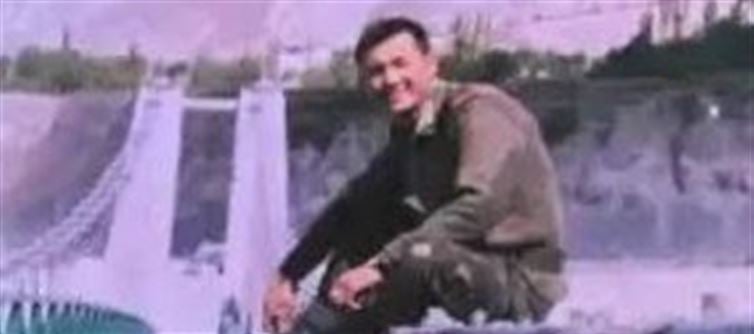
Tsewang Tharchin, a 46-year-old ex-soldier of the Ladakh Scouts Regiment, epitomized valor and dedication. Having joined the indian Army at 17, he served for 22 years, participating in the 1999 Kargil War, where he played a pivotal role in securing victory. Yet, despite his sacrifices for the nation, Tharchin met a tragic end not on the battlefield, but on the streets of Leh.
On september 24, 2025, during a protest organized by the Leh Apex Body advocating for statehood and Sixth Schedule protections for Ladakh, Tharchin was fatally shot by security forces. The incident occurred as he attempted to join a hunger strike, reflecting the deepening unrest in the region over demands for greater autonomy and constitutional safeguards
1. A Soldier's Legacy: From Kargil to Civilian Life
Tharchin's journey from a young recruit to a seasoned soldier is a testament to his commitment to the nation. After retiring from active service, he returned to his homeland in Zanskar, engaging in community welfare activities and supporting ex-servicemen's initiatives. His transition from military life to civilian activism showcased his enduring dedication to the welfare of Ladakh and its people.
2. The Catalyst for Tragedy: The Leh Apex Body's Protest
The Leh Apex Body, a collective advocating for Ladakh's statehood and inclusion under the Sixth Schedule, organized a hunger strike to press their demands. Tharchin, moved by the cause and the plight of his fellow Ladakhis, decided to participate. His involvement highlighted the deep-seated frustrations within the region regarding political marginalization and the erosion of local autonomy since Ladakh's reorganization in 2019.
3. The Fatal Confrontation: A Nation's Betrayal
On the day of the protest, tensions escalated between demonstrators and security forces. Amidst the chaos, Tharchin was shot, with reports indicating a single bullet wound to his back, exiting near his chest. His death underscored the government's heavy-handed approach to dissent and raised questions about the treatment of veterans who once defended the nation.
4. Aftermath: A Family's Grief and a Nation's Reflection
In the wake of Tharchin's death, his family and the community were left to grapple with the loss of a hero. Buddhist monks and relatives gathered at his home in Leh, offering prayers and paying their respects. The incident prompted widespread condemnation from various quarters, including local political groups and human rights organizations, who demanded accountability and justice.
5. A Call for Accountability: Justice for Tsewang Tharchin
The tragic death of Tsewang Tharchin serves as a stark reminder of the need for accountability in governance. As a nation, it is imperative to honor the sacrifices of our veterans not just in words but through actions that reflect respect and gratitude. The call for justice for Tharchin is not just about one man's death but about upholding the values of democracy, justice, and the sanctity of life.
Conclusion:
Tsewang Tharchin's life and untimely death highlight the complex interplay between military service, civilian activism, and state response. His story is a poignant reminder of the sacrifices made by individuals in the service of their nation and the importance of ensuring that their voices are heard and respected in the corridors of power. As the nation reflects on his legacy, it must also confront the questions his death raises about the treatment of its heroes and the values it upholds.




 click and follow Indiaherald WhatsApp channel
click and follow Indiaherald WhatsApp channel